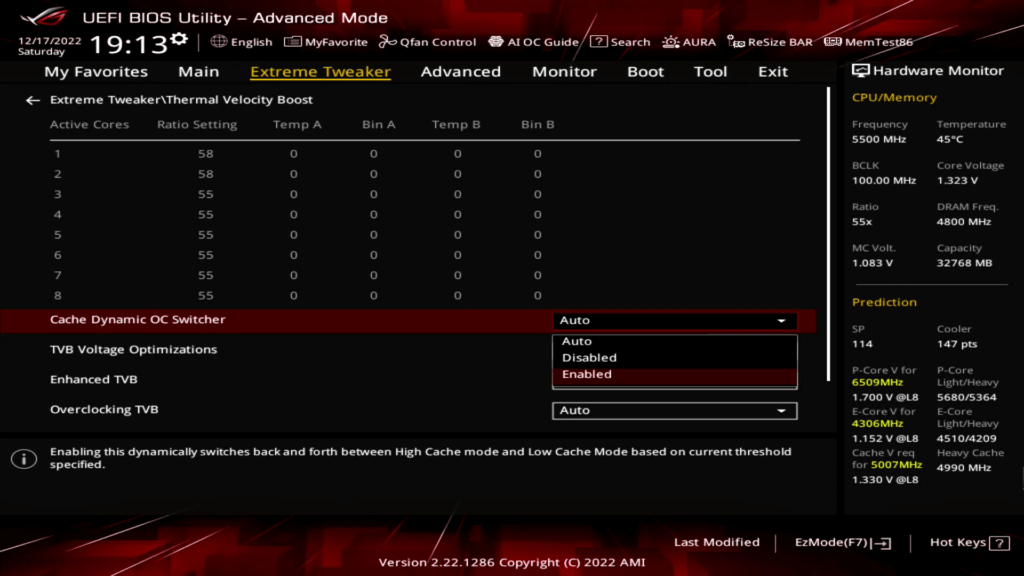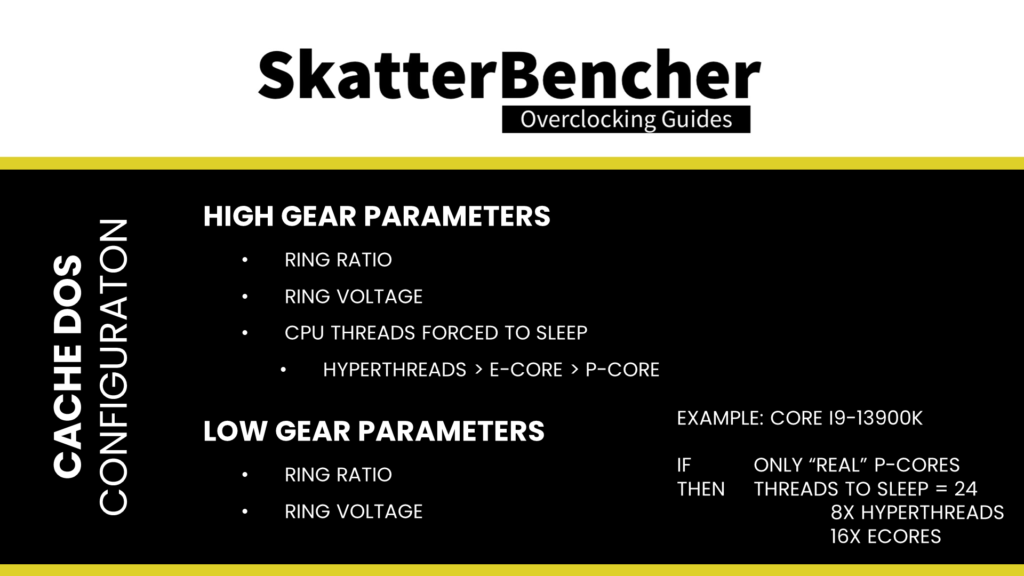Cache Dynamic OC Switcher enables at-runtime switching between low gear and high gear to optimize Ring frequency and performance.
ASUS Dynamic OC Switcher is a notable feature on ASUS AMD motherboards. It was first introduced on the Crosshair VIII Dark Hero motherboard, and I first showed how it worked in SkatterBencher #15.
On AMD platforms, Dynamic OC Switcher allows at-runtime switching between OC and PBO modes to maximize the overclocking for single-core and all-core workloads. Cache Dynamic OC Switcher is similar in that it enables at-runtime switching at a specific trigger point. However, as the name already implies, this is not to switch for CPU frequency optimization but for Ring performance optimization. Here’s how it works.

You define two so-called “gears,” high and low gear, and a trigger switching point. The trigger is the CPU current. Anything above the set threshold triggers low gear, and everything below the threshold activates high gear. Practically, low gear represents an all-core load, while high gear represents a light or few-threaded workload.

- In high gear, you can define 3 parameters: the Ring ratio, the Ring voltage, and the number of threads to go to sleep.
- In low gear, you define 2 parameters: the Ring Ratio and the Ring Voltage.
The motherboard will force several CPU threads to sleep when the high gear is activated. The threads are disabled in priority with the hyperthreads first, then the E-cores, then the P-cores.
Suppose you’re using a Core i9-13900K and want only “real” P-cores to be used in high gear mode. In that case, you’d set the number of threads to sleep to 24, as this will include the 8 P-core hyperthreads and the 16 E-cores.

The main reason why this feature exists is that the Ring is stable at higher frequencies when only P-cores are active compared to when both P- and E-cores are active.
Cache Dynamic OC Switcher is available on select ASUS ROG Z790 motherboards